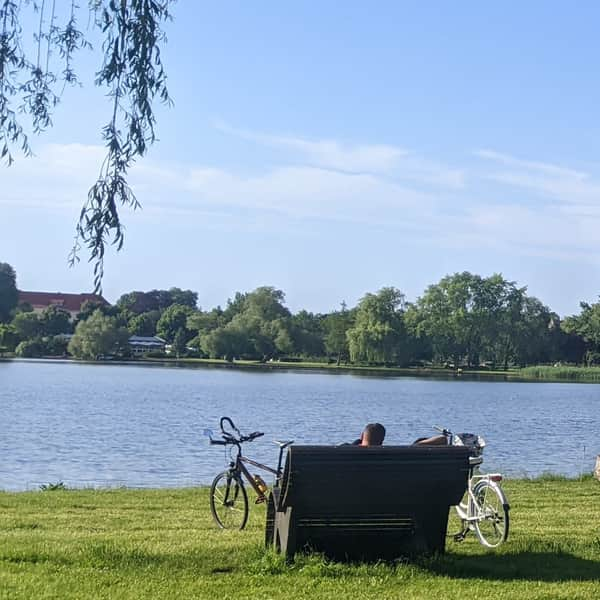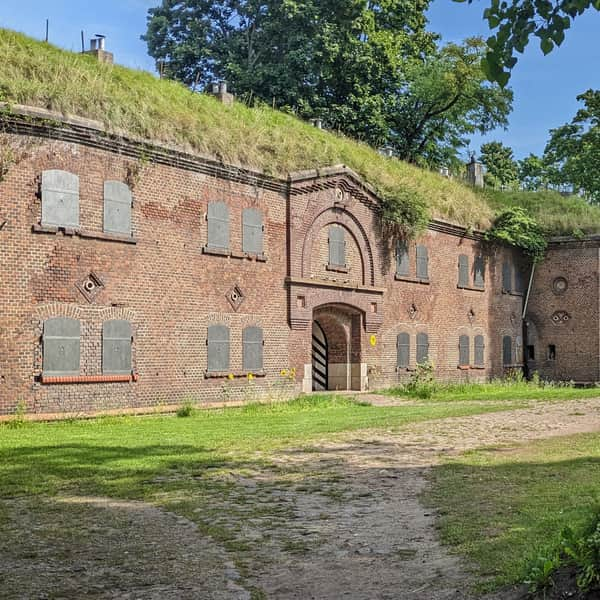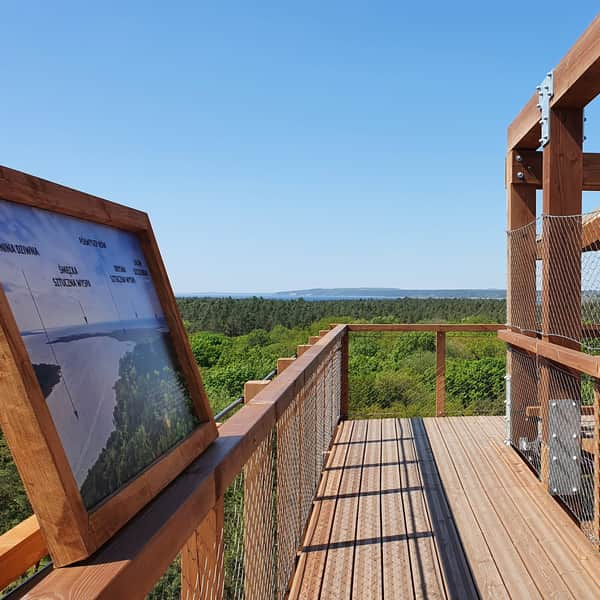Trzebiatów - the Elephant Town. A Trail with a Map through Murals and Monuments
shopping_cart Store nearby
sports_basketball Playground along the route
train Access by train possible
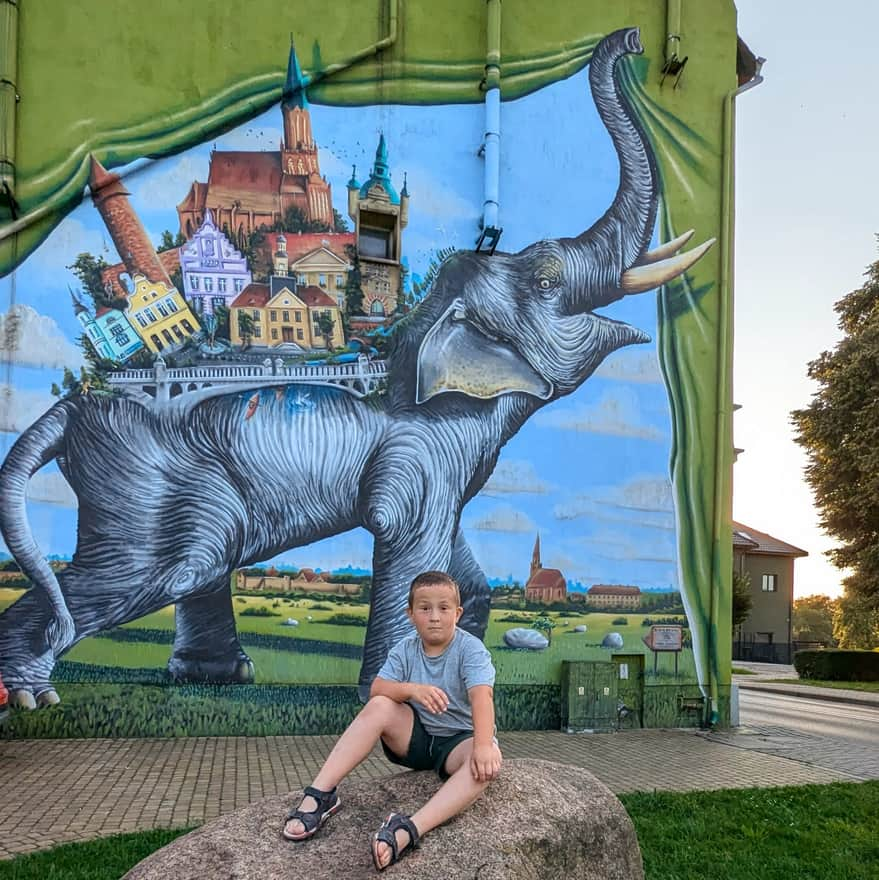
Trzebiatów is a small but charming town located in the West Pomeranian Voivodeship, near the Rega River, about 8 km from the Baltic Sea. Its history dates back to the Middle Ages, specifically the 13th century, when the settlement was granted city rights.
In the late 14th and early 15th centuries, Trzebiatów was a large port and a member of the Hanseatic League - a medieval association of merchants or trading cities in Europe. It had the right to free navigation on the Rega River. The town traded herring, salt, beer, malt, onions, and gingerbread with many Baltic cities, such as Copenhagen and Kołobrzeg. Unfortunately, in the 17th century, strong storms and silting made navigation on the Rega River impossible.
- The town organizes a festival called "Kasha Festival" related to the legend of the local tower.
- In the summer, it's worth going on a night tour of Trzebiatów.
- You can find a playground on the route near the Palace by the Mill Stream.
Where does the name Trzebiatów come from?
The name of the town Trzebiatów has Slavic origins. In the 9th century, there was a fortified Slavic settlement here - during excavations, fragments of buildings with hearths and a significant amount of Slavic pottery were discovered. The name Trzebiatów most likely comes from the word 'trebiti,' which meant to offer, or from the word 'trebiste,' which meant altar. It refers to the offering rituals in the nearby pagan temples that existed around Trzebiatów until the 12th century.
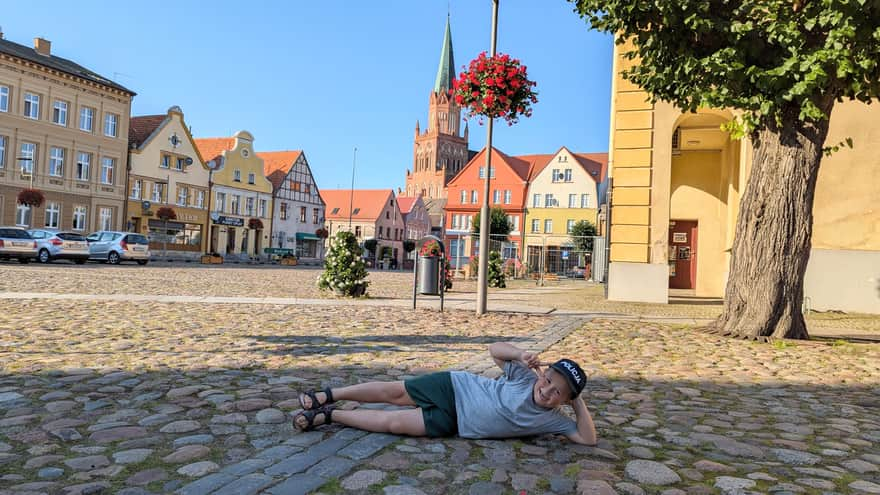
Market Square, Town Hall, and Trzebiatów's Bugle Call
In the heart of the market square, there is a historic town hall building. It has a small inner courtyard where the remains of a gallows were discovered. Trzebiatów also has its own bugle call! The Trzebiatów bugle call is played mechanically four times a day: at 9 AM, 12 PM, 3 PM, and 6 PM from the town hall tower. It was composed for the 700th anniversary of Trzebiatów in 1977 by Szczecin composer Walerian Pawłowski. While in the market square, also take note of the surrounding historic townhouses - each one is unique and has its own architectural style.
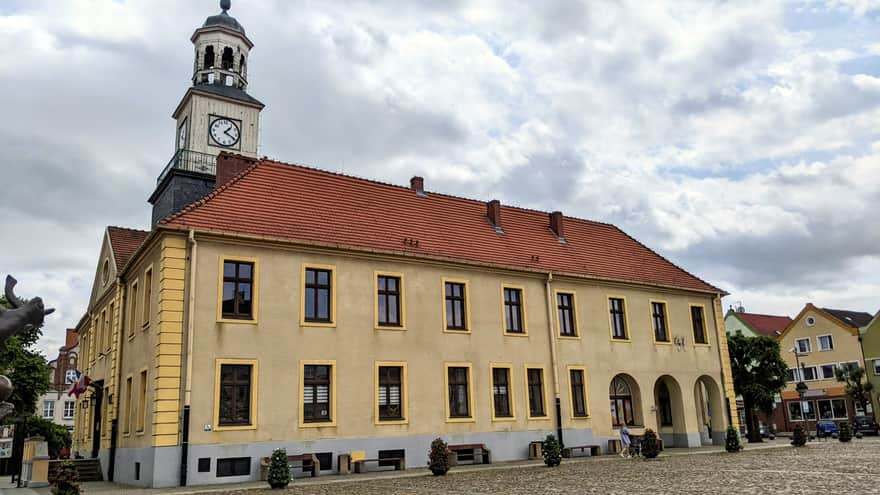
Trzebiatów - the Elephant Town
In the market square of Trzebiatów, you will find a statue of a circus elephant performing tricks. It refers to the extraordinary story of the Indian elephant Hansken, who performed in a traveling circus in the 17th century. The elephant was a kind of stage star. A live elephant was a great event in Europe at that time and attracted much attention. Traveling with her caretaker through many European countries, the elephant gained fame and became the subject of several paintings. She was immortalized by Rembrandt, among others.
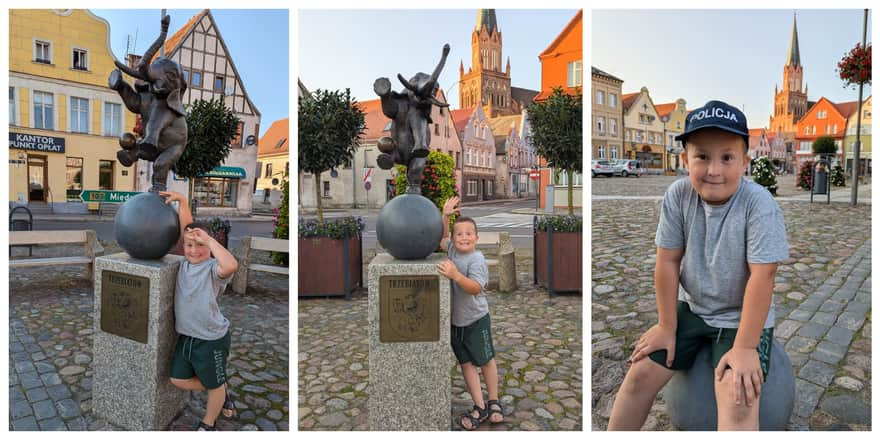
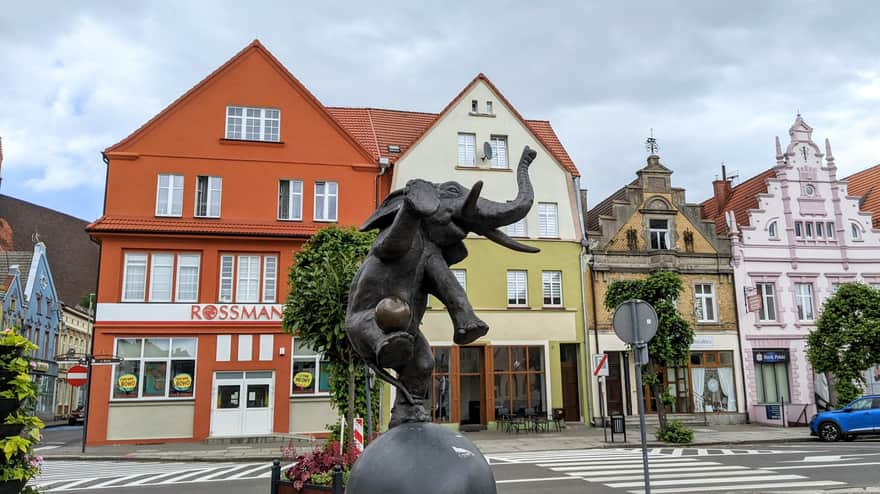
Hansken Elephant Sgraffito on the Wall of House No. 26 in the Market Square in Trzebiatów
The celebrity elephant, while traveling through European cities, also visited Trzebiatów. On the wall of house No. 26 in the market square in Trzebiatów, there is a sgraffito made in 1639 and discovered during renovation works in 1914, depicting the elephant and her caretaker. Sgraffito is a popular European technique for decorating walls and building facades. It involves applying several layers of differently colored plaster to a wall and then scraping off the top layers according to a pattern.
Thus, the elephant became one of the symbols of the town. In Trzebiatów, the "Elephant Trail" was created, leading through the town's most important monuments.
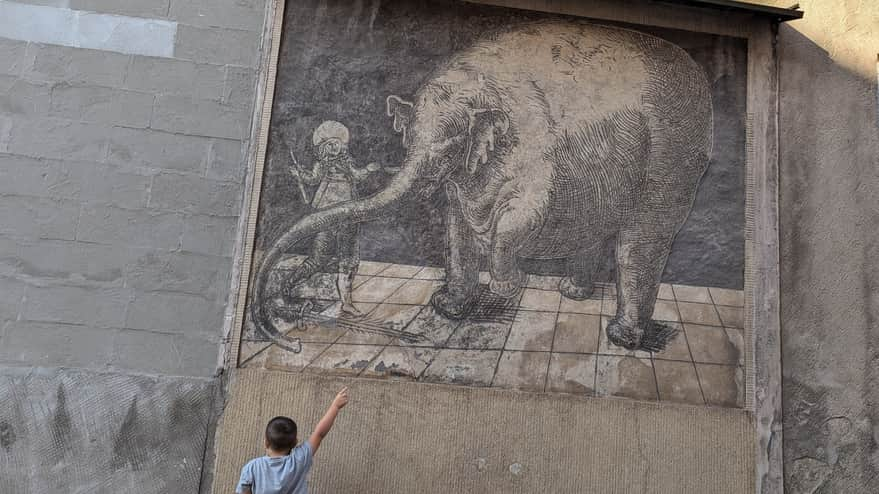
The Legend of the Kasha Tower, or How a Bowl of Kasha Saved the Town...
The legend refers to disputes with the neighboring town of Gryfice over the right to navigate the Rega River. This conflict led to several wars. According to the legend, in the 15th century, the people of Gryfice were preparing to storm Trzebiatów at night. As they approached the town walls, a guard on night watch on the tower dropped a bowl of hot kasha he was eating. It fell on the head of one of the enemy warriors. His loud cry alerted the town's residents, and the ambush failed.
In memory of this event, the residents of Trzebiatów organize the Kasha Festival every year. During this event, you can watch warrior fight shows, browse craft stalls, and enjoy concerts.
The legend has been illustrated with a mural depicting the scene of the legendary bowl of kasha falling. The mural was created by the artist Cukin.
The mural is located at 33 Wojska Polskiego Street.
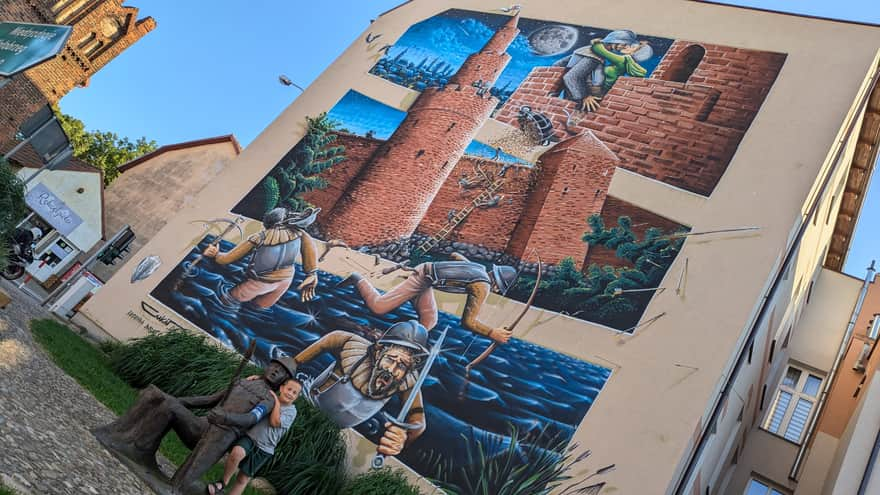
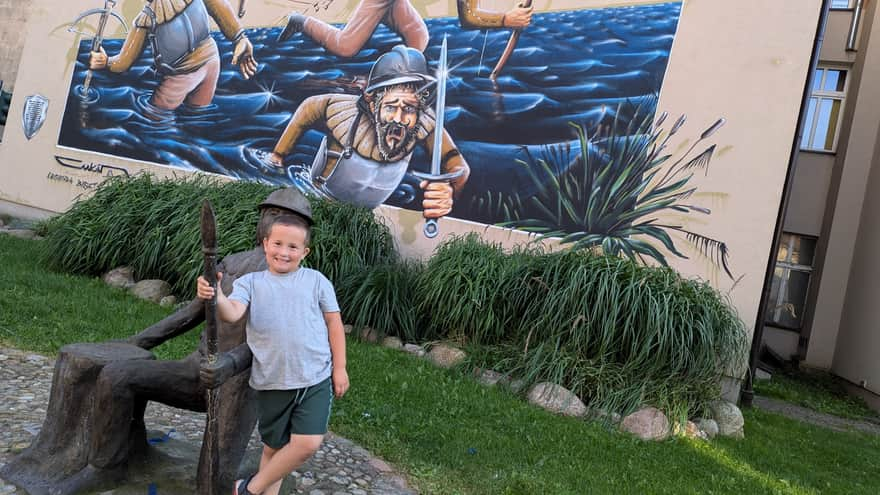
Kasha Tower and City Walls
Near the mural is the Kasha Tower, also known as the Powder Tower. In its basement, there is a prison cell and an observation point overlooking the Rega River. Later, it was used as a gunpowder storage. It is part of the medieval defensive walls that once surrounded the entire town. Trzebiatów's walls were about 2.5 kilometers long. The town had four gates: Kołobrzeska, Gryficka, Żeglarska, and Łaziebna. More than half of the old fortifications have survived to this day.
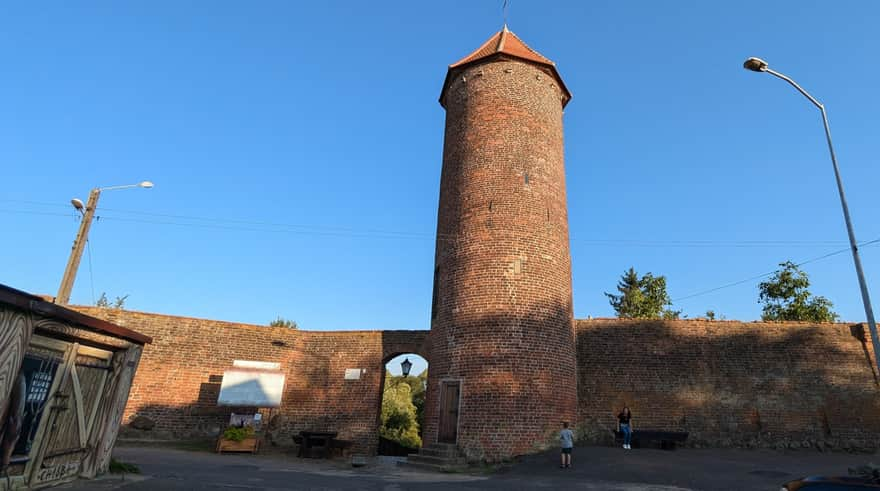
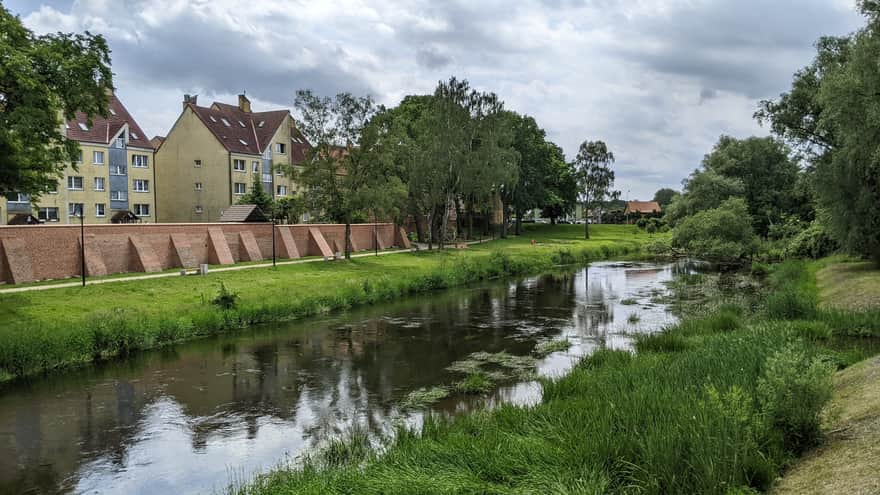
Gryphon Mural
Another of Trzebiatów's murals is the artist's vision referring to the coat of arms of Trzebiatów - a red gryphon on a silver background, holding a golden shield with a green clover leaf in its claws. Next to the gryphon is a blue key.
The mural is located at 24 Henryka Sienkiewicza Street.
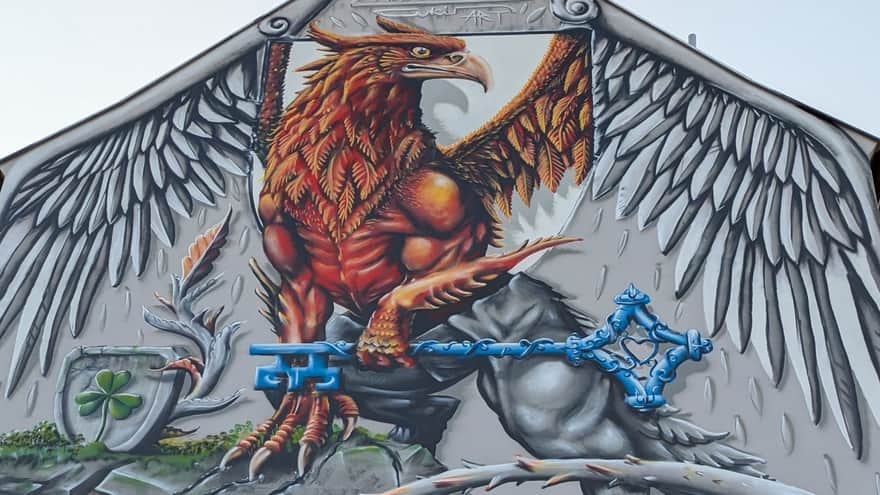
Elephant Mural
The mural with the image of the elephant was the first of Trzebiatów's murals. The mural depicts an elephant carrying all the monuments and important places in the town on its back. The mural was created by the artist Cukin. The creation of the mural was funded by residents' donations.
The mural is located at 21 Mostowa Street.
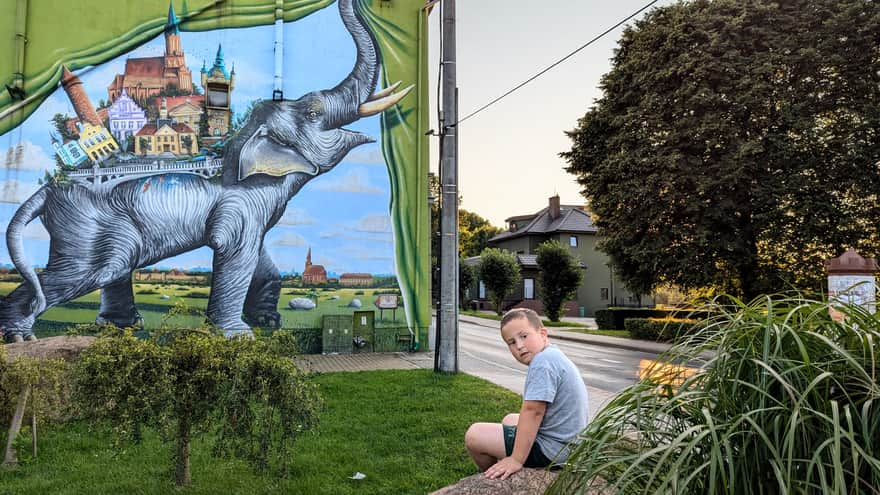
Publish Date:
More in the Region Zachodniopomorskie

